 |
 |





 |
 |
 |
 |
 |
 |
Fallen workers to be remembered April 29
|
 |
 |
 |
The above photograph
is part of the campaign now underway to raise public awareness for safety
in work zones.
|
Mn/DOT’s Worker Memorial Day commemoration takes place statewide on Monday,
April 29.
The day honors workers who were injured or killed performing their jobs as
highway maintenance and construction workers. Since 1960, 28 Mn/DOT transportation
workers have been killed in work-related crashes.
Employees will hear a taped message from Commissioner Elwyn Tinklenberg at
1:55 p.m. and observe a moment of silence at 2 p.m.
As in the past, there is an official Worker Memorial event to mark the day
and this year it is part of the James L. Oberstar Forum on Transportation Policy
and Technology. The worker memorial event begins at 1:30 p.m. at the Radisson
Metrodome on the East Bank of the University of Minnesota and will include remarks
from Tinklenberg, U.S. Rep. Oberstar, U.S. DOT Secretary Norman Mineta and Executive
Director of AFSCME Council 6, AFL-CIO, Peter Benner.
"We hope Mn/DOT employees will wear their orange-ribboned worker memorial
pins on Monday the 29th in honor of our maintenance and construction workers
who have been killed on the job," said Ray Vial, construction safety supervisor
and Worker Memorial Day event planner. "These pins also remind us to share
with friends and family the importance of staying alert in the work zones. We
have a beautiful new memorial dedicated in 2000—we don’t want to add any more
names to it."
During the last five years there have been 10,951 work zone crashes on Minnesota
streets and highways, resulting in 52 fatalities and 4,911injuries.
"Safety is Mn/DOT’s top priority," Tinklenberg said. "Motorists
need to drive like the lives of our workers depend on them—because they do.
Safety does not just happen—we all must make it happen."
Click here for more information about work
zone safety.
By Mary Meinert
|
back

|
 |
Crash on I-535 Blatnik Bridge claims life of Duluth’s Dick Unzen
|
 |
 |
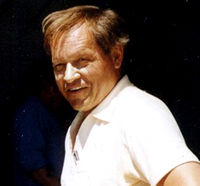 |
|
Dick Unzen, a transportation
generalist at Duluth, was killed April 22 when he got out of his vehicle
to remove a hazard from traffic lanes on the John Blatnik Bridge that
links Duluth and Superior, Wis. Unzen, seen here in a 1998 photo, was
remembered as "a kind man who was looked up to by his fellow employees."
|
Richard (Dick) Unzen, 61, a transportation generalist at Duluth, was killed
Monday when he got out of his vehicle to remove a hazard from traffic lanes
on the John Blatnik Bridge, part of I-535 that links Duluth and Superior, Wis.
Unzen, who was off-duty when the incident occurred, stopped to remove a ladder
which had fallen from a truck and was blocking both southbound lanes of the
bridge.
Unzen was struck by a vehicle involved in a chain-reaction crash on the bridge
and knocked over a concrete barrier, falling 130 feet into the frigid waters
of St. Louis Bay. The Coast Guard pulled him from the water within a few minutes
but resuscitation efforts failed.
Unzen had left work around noon, after completing a snowplowing shift that
started at 3 a.m.
"He was a Good Samaritan trying to do a good deed and it got him killed,"
said Capt. Clarence Nylund of the Minnesota State Patrol, according to a report
in the Duluth News Tribune.
"This is such a tragic loss. My sympathies go out to the family, co-workers
and friends who were clearly touched by such a caring person," said Commissioner
Elwyn Tinklenberg. "Those who knew Dick best said they are not surprised
he stopped to help someone in need. He lived his life helping people and he
died helping people. He was a family man, a dedicated employee and will be missed
by all."
Unzen’s attempt to remedy the situation typifies the expectation co-workers
at Duluth held of him.
"Dick was a kind man who was looked up to by his fellow employees,"
said Maureen Talarico, the district’s public affairs coordinator. "People
who knew him know it would have been impossible for him not to stop and help."
John Shallow, maintenance supervisor at Duluth said Unzen "was the kind
of guy you want to have on your crew. He always loved what he did whether it
was plowing snow or bridge maintenance or working in the sign shop. He was reliable
and well-respected, very good at what he did and the kind of guy you could always
reach. He didn’t leave his job at the door. We will miss him here."
Unzen had worked at the Duluth District since 1985, serving as a seasonal laborer,
bridge worker and transportation generalist. His spouse, five children and five
grandchildren survive him.
By Craig Wilkins
|
back

|
 |
Technical Support changes focus on cost estimating, project
reviews, municipal agreements
|
 |
 |
The Senior Management Team last week approved recommended
changes for the Office of Technical Support. The recommendations are part of
the department-wide Shaping Our Future effort to adapt to changing state and
national priorities, the economic climate, new technology and customer needs.
Most of the operational change in this office will involve cost estimating,
layout review and municipal agreements.
Technical Support will develop expertise to support early
project cost estimating, evaluation of new estimating methods and tools, and
training services for district offices. District offices will perform the actual
early cost estimates. Final plan estimates will continue to be done by the districts,
where needed, for purposes such as cost-share agreements between state and local
governments. The Engineer’s Cost Estimate, used to assess bid quality and required
by state statute for all projects, will remain a function of Technical Support.
Geometric Layouts now include four levels based on design
type and complexity. Central Office Geometrics will now limit its reviews to
Level One layouts. These layouts involve major work on interstate highways,
high-profile projects like the Wakota Bridge and design/build projects like
Hwy 52. Mn/DOT is working with the Federal Highway Administration to define
appropriate design delegation as part of the FHWA-Mn/DOT Stewardship Agreement.
Municipal agreements now prepared in Technical Support may
be prepared by districts in the future at the district’s choice. The Streamlining
Steering Committee had also recommended a move in this direction. Technical
Support will review and approve the agreements. The office will also provide
training, develop a checklist approach to ensure that all key items are completed,
and provide boilerplate language to simplify the process.
Processes for review and approval of design exceptions and
plan title sheet signatures will remain in place. Visualization services will
remain in Technical Support, but will be focused more on guidance, leading edge
research and support for districts that do not have this expertise. Other areas
within the office may need to be addressed.
For more information contact Del Gerdes, Technical Support
director, at 651/296-3036.
Click here for more information about Shaping
Our Future and to read an earlier Mn/DOT
Newsline article
discussing other changes to the Office of Technical Support. Send questions
to change@dot.state.mn.us
or to Change, Mail Stop 150.
By Jeanne Aamodt
|
back

|
 |
Commissioner asks Cadillac to pull TV ad
|
 |
 |
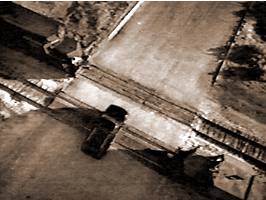 |
Saying that it sent
a "dangerous message," Commissioner Elwyn Tinklenberg sent a
letter to General Motors Corp. last Friday objecting to a TV commercial
that depicts two stopped trains waiting for a Cadillac Escalade to cross
the tracks.
|
A television commercial for Cadillac, which portrays two stopped trains waiting
for a Cadillac Escalade to cross the tracks before they resume their travel,
sends a dangerous message, says Commissioner Elwyn Tinklenberg. He sent a letter
to General Motors Corp. April 19 expressing his concern.
"Trains and cars can be a deadly mixture," Tinklenberg said. "A
train traveling 50 miles per hour takes 1.5 miles to make a complete stop. When
a train crushes a car, it does it with the same force that a car crushes a pop
can. All of us need to remember to be alert and careful at railroad crossings."
According to April 24 Associated Press reports, GM said it stands by the television
advertisement. AP also reported that GM officials planned to meet with Tinklenberg
to discuss the concerns he raised in his letter to company Chairman John F.
Smith.
In 2001, there were 962 fatalities, 10,418 injuries and countless near misses
at national highway rail crossings. In Minnesota, fatalities have declined over
the past 20 years; however, during the first three months of 2002, there have
already been four fatalities in Minnesota—one less than in all of 2001.
Research shows that most people are not aware of the dangers at railroad crossings.
Trains are not required to stop at crossings; they are only required to blow
their whistles. What drivers do—or don’t do—can mean life or death.
In an interview with Fox 29 news, Al Vogel, director of the Office of Freight,
Railroads and Waterways, stated that Mn/DOT invests $4 to $5 million annually
in improving engineering at crossings. Vogel attributed the general decline
in accidents over the last 20 years to engineering improvements such as signals
and gates and a concerted effort by Mn/DOT, railroads and Operation Lifesaver
to educate drivers. Minnesota has almost 4,700 miles of railroad track and more
than 5,000 public grade crossings.
Mn/DOT’s Grade Crossing Safety Improvement Program upgrades safety at rail-highway
intersections by improving visibility, recommending and funding warning devices.
However, a host of warning devices cannot prevent a driver from making a bad
choice and becoming a statistic.
The Office of Freight, Railroads and Waterways partners with Minnesota Operation
Lifesaver and Minnesota’s railroad companies to make educational presentations
and distribute railroad safety information. To find out about the services offered,
contact Deb Hipp at 651/296-0359 or check out the Web site at http://www.dot.state.mn.us/rail.html.
By Sue Stein
|
back

|
 |
Initial plans released to improve vital interregional corridors
|
 |
 |
Seven plans Mn/DOT developed with its local partners show that almost 600 miles
of Minnesota’s interregional corridor system need short-term operational or
safety improvements.
The Minnesota Statewide Planning Steering Committee released the recommendations
today after working for almost one year with local residents, business leaders
and government representatives who live and work along seven Minnesota interregional
corridors. Committee members came from the Metropolitan Council, the state departments
of Natural Resources, Transportation, Planning, Pollution Control, and the Federal
Highway Administration.
These seven plans are a first step toward protecting and improving the interregional
corridor system that Mn/DOT adopted in 2000. The IRC system identifies 2,900
miles of highways connecting the state’s important regional trade centers.
"By establishing trust with local communities early in the process, Mn/DOT
can act as a catalyst and resource for local transportation and land use planning
efforts," said Doug Weiszhaar, deputy commissioner/chief engineer.
"Equally important is the need to promote long-range comprehensive planning
by the townships, cities and counties along the routes to help improve, maintain
and offer transportation alternatives," Weiszhaar said.
According to Weiszhaar, improvements are needed to ensure the economic connections
throughout the entire state. However, long-term projects to improve system performance,
such as replacing signalized intersections with bridges or interchanges, remain
critical to protect long-term efficient movement of goods and people.
Recommendations for future improvements include preserving property near major
intersections for future projects and promoting access control as part of site
planning by city councils and planning commissions. Traffic impact studies may
also be required if future land development will affect state and local roads.
Mn/DOT held open houses and public hearings along the corridors to gather public
comment and suggestions.
"We wanted this to be a truly coordinated community effort," said
Dick Bautch, interregional corridor manager, citing positive feedback Mn/DOT
received from in the 212 Corridor Study.
A key component of Mn/DOT’s Moving Minnesota plan is improvement and protection
of important highway connections between Minnesota’s regional trade centers.
The Moving Minnesota funding package approved by the Legislature in 2000 provided
one-time money for the ABCs of transportation—Advantages for transit,
Bottleneck removal and Corridor connections. This study focused
on the connections.
For more information about the studies or Moving Minnesota, check Mn/DOT’s
Web site at www.dot.state.mn.us/movingminnesota/ircstudies.
By Judy Jacobs
|
back

|
 |
Automated system makes truck permit application easier
|
 |
 |
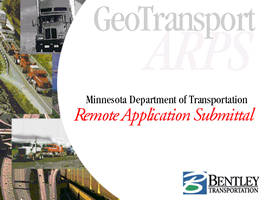 |
The Office of Motor
Carrier Services is testing a new Web-based system that allows contractors
and other users of large commercial vehicles to apply electronically for
permits in less than 15 minutes. The pilot program includes nine companies;
Mn/DOT hopes to have a complete automated system available to all customers
by June 2003.
|
Applying for permits for over-dimension or oversized vehicles has now become
a lot simpler, thanks to an automated processing system Mn/DOT is piloting.
The Web-based system allows contractors and other users of large commercial
vehicles to apply for permits electronically in less than 15 minutes.
Mn/DOT launched the new application in late February in response to the large
volume of requests it received for road permits and the slow turn-around time
for issuing the permits.
"The old way of applying for permits required customers to call in their
request—it could take up to two days to issue a permit," said Becky Ellinghuysen,
a supervisor with the Office of Motor Carrier Services and project manager for
the new system.
The department processes more than 57,000 single-trip permits each year and
receives nearly 120,000 requests by telephone for information or for over-dimension
or oversized vehicle permits.
Mn/DOT chose nine companies that are members of the Minnesota chapter of the
Associated General Contractors, the nation’s largest and oldest construction
trade association, to test the new system.
"We’ve worked with Mn/DOT for the last two and a half years in developing
this system," said Wayne Murphy, director of AGC’s Minnesota chapter. "The
new system is phenomenal—it’s faster, and it seems to be flawless."
"We request an average of 30 permits a week," said Jim Hartman, a
contractor with Truck Crane Service of St. Paul. "It’s a giant step forward
(for the department). It’s definitely a privilege to be in this pilot."
With the new system, applicants type in basic information consisting of vehicle
size and weight, requested travel route and final destination.
The system is highly advanced, according to Pierre Carpenter, Motor Carrier
Services permit supervisor.
"After the customer enters the information, the system will edit it and
decide if it’s correct or not; if not, drop-down screens will help the customer
to enter the correct information," he said.
The permit process plays a major role in the completion of construction projects
by transporting heavy equipment and materials. The quicker the permit process
works, the faster contractors can get their crews out on the road to deliver
those projects in a safe, timely manner.
"This process is a stepping stone. Our ultimate goal is to have a system
that requires no human intervention," Ellinghuysen said.
Mn/DOT continuously seeks ways to advance highway safety for commercial transportation
and the motorists who share the roads with these over-sized vehicles.
The agency is currently expanding its Minnesota Condition and Acquisition Reporting
System that contains weather, road condition, construction, special event and
permit information. This system will allow Mn/DOT along with other state agencies
to store road and weather conditions through a central collection system.
"Our goal is to link our permit routing system to MnCARS, along with other
data sources to help implement a fully automated system," Ellinghuysen
said.
Mn/DOT hopes to have a complete automated system available to all customers
by June 2003.
Click here for more information on how Motor
Carrier Services is improving service to its customers.
By Daneeka Marshall-Oquendo
|
back

|
 |
Groundbreaking marks start of new Hwy169/19 interchange to improve safety, corridor
traffic flow
|
 |
 |
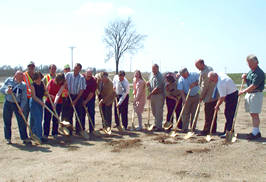 |
Officials from Mn/DOT,
two counties, four cities and other agencies participated April 18 in
the groundbreaking ceremony for a new Hwy 169/Hwy 19 interchange near
in Belle Plaine. Photo by Rebecca Arndt
|
Sunlight glinted off their shovels and clods of earth flew as legislators and
officials from Mn/DOT, cities, counties and other agencies turned the first
ground for a new Hwy 169/Hwy 19 interchange near Belle Plaine on Thursday, April
18.
The $6.8 million project received $4.2 million to speed its completion by the
Legislature in 2000 to as part of Moving Minnesota’s interregional corridor
improvement program.
The project comprises part of the Hwy 169 Corridor Management Plan designed
to improve the flow of traffic between the Twin Cities metro area, St. Peter,
Mankato and other cities in the busy corridor.
The project enjoys strong support from area residents and businesses because
of the safety improvements it will create, noted Rebecca Arndt, Mankato public
affairs coordinator.
The project will be completed in fall 2003.
In addition to the symbolic groundbreaking, the event also included a reception
where citizens could meet with elected officials as well as design and construction
staff from the Mankato District to address questions and concerns about the
project and other future changes in the Hwy 169 corridor.
|
back

|
 |
Peters appointed as new TOCC project manager
|
 |
 |
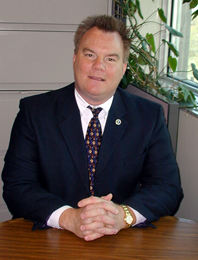 |
Tom Peters, Office of
Traffic Engineering/Intelligent Transportation Systems, has been appointed
the new project manager for the Transportation Operations Communications
Centers.
|
Tom Peters, Office of Traffic Engineering/Intelligent Transportation Systems,
has been appointed to the position of project manager for the Transportation
Operations Communications Centers, announced Nelrae Succio, District Operations
director.
Peters succeeds Steve Bahler, who will be leaving Mn/DOT to work with a consulting
firm in Nebraska.
Peters previously worked as an ITS program manager in the Office of Advanced
Transportation Systems for almost five years. Prior to Mn/DOT, Peters spent
10 years with the Federal Highway Administration and four years with the U.S.
Army Corps of Engineers. Peters has a B.A. in Civil Engineering with a minor
in Business Administration and has been a professional engineer since 1987.
As TOCC project manager, Peters will be able to combine his background in ITS,
his project management skills and his current experience working with districts
to implement ITS technologies in the TOCC, to solidify the partnership between
Mn/DOT and the Department of Public Safety.
|
back

|
 |
Detroit Lakes names McLeod as public affairs coordinator
|
 |
 |
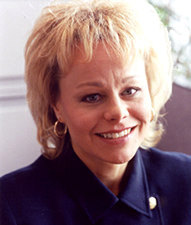 |
In her new role as Detroit
Lakes District public affairs coordinator, Pamela McLeod will provide
leadership to management and staff in areas such as internal communications,
media relations and community relations. Photo by Craig Wilkins
|
The Detroit Lakes District appointed Pamela McLeod as its public affairs coordinator.
Before her new appointment, McLeod served as an employee development specialist
with the district.
She succeeds Pat Vogt, who transferred to full-time duties with the district’s
business office.
In her new role, McLeod will provide leadership to management and staff in
areas such as internal communications, media relations and community relations.
Before joining Mn/DOT in 1999 at Detroit Lakes, McLeod worked with the state
Office of Tourism and the Department of Employee Relations in communications
and training since 1988.
A native of Moorhead, McLeod holds a bachelor’s degree in communications from
Concordia College, St. Paul.
McLeod may be reached at 218/847-1568.
|
back

|
 |
Roll over Shakespeare: Employees observe National Poetry Month with original works
|
 |
 |
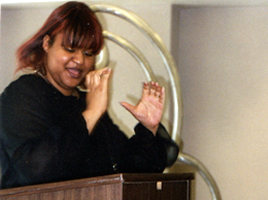 |
Tanaya Holmes, Administrative
Services, used sign language to recite "Thoughts of a Deaf Child,"
by Stephen J. Bellitz, at an April 17 event celebrating National Poetry
Month. Margaret Walsh, Human Resources, read aloud as Holmes signed the
poem, which ends with these words: "I never cared about the sound
of radios and bands/What hurts me most, I never heard/My parents’ signing
hands."
|
The words of Maya Angelou, Stephen Crane, Black Elk and Langston Hughes echoed
in the halls of the Transportation Building in St. Paul on April 17 during a
lunch hour program celebrating National Poetry Month.
Mixed in with the poems from world-renown writers were original poems from
a number of Mn/DOT employees, including Elizabeth Kay Brzoska, Metro Division
MIS; Justina Dansky, Human Resources; Leo Holm, Environmental Services; Ron
McLane, Information Resource Management; Qin Tang, Mn/DOT Library; Andy Terry,
Electronic Communications, and Aurora Walls, Information Resource Management.
The diversity committees for Program Support/Modal Operations and the Management
Operations Group sponsored the event, which included a colorful buffet of desserts,
fruits, cheeses and beverages.
Other poetry reciters were Maya Beecham, Bruce Biser, Eric Davis, Rebecca Fabunmi,
Linda Gremillion (emcee), Barb Hogan, Tanaya Holmes, Liz Pawlak and John Tompkins.
Bev Kelley and Margaret Walsh, both from the Office of Human Resources, provided
sign language services for the program.
Poems ran thematically from the patriotic to the sorrowful to the inspirational,
such as Dansky's poem, "That Day," about the tragic events of Sept.
11; Holm's poem, "Ramona," about the loss of his sister, and Walls'
poem, "Life Like Basketball," about the rhythms of life.
Not all of the poems were products of recent artistic endeavors. Terry recited
a poem that he wrote in high school—"before I suppressed that side of me
and became an engineer," he told a laughing audience.
Some of the poems are available for viewing in the display case outside the
cafeteria on ground floor.
|
back

|
|
 |
|



